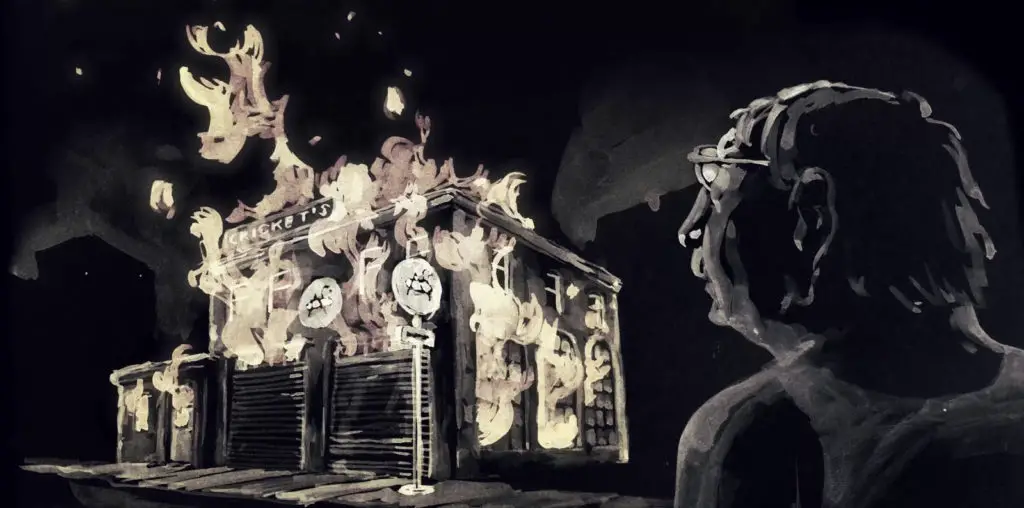
The film opens on a typical hospital setting, the camera focusing on a medical team decked out in tell-tale scrubs, wheeling a patient on a gurney. The shot flashes forward in time, but this time the setting is in the middle of a surgery. With silver tools flashing, a group of surgeons is captured operating on a cut-open patient.
Suddenly, the power flicker and the lights go completely out. The viewer experiences a moment of near-panic, expecting the worst. But much to your surprise, the surgeons don’t even blink, and continue on with their work in near darkness.
This is how director and producer Amy Miller introduces us to her latest documentary, Tomorrow’s Power. A powerful sequence, this hospital blackout stands out as the single most scintillating scene in the entire 72 minutes. From that point onwards, Miller does her best to explore the environmentally-charged narratives of three communities around the world.
It’s a piece intended to make you aware of the eco-struggles in unexpected locations. Tomorrow’s Power follows the residents of very different regions in Colombia, Germany, and Gaza, as they all deal with diverse climate-linked issues.
Your head spins as the camera shifts from place to place, jumping from war-torn Arauca, to activist meetings in Rheinland, to hospitals across Gaza. Too much is the best way to describe this stringing of narratives. The biggest flaw of the production shows up early on; the viewer isn’t allowed enough time to genuinely relate to the residents in each area.

“…from war-torn Arauca, to activist meetings in Rheinland, to hospitals across Gaza…”
“As for the hospital in Gaza…there is no way of knowing when the power will be lost,” says Dr. Mohammed Al Ziyara within first few minutes of Tomorrow’s Power. The documentary follows Dr. Ziyara for the storyline depicted in Gaza. We learn that the ongoing power crisis causes twice as many injuries reported to hospitals. Dr. Ziyara and other hospital staff members interviewed teach us that the power crisis causes more serious situations than injuries; the blackouts routinely cause death.
Before the implications of this can resonate with you, the setting shifts to Arauca. We learn here that that the Colombian region has been occupied by the military for 42 years. An older man is filmed instructing a group of people opposed to the government’s oil exploitation in the region.
“We won’t attack them. But we will defend ourselves.”
From there, human rights observer Sonia Milena Lopez vocalizes the region’s battles. Through her, we learn about the military occupation and conflicts the locals have with large economic projects which threaten the well-being of the community.
Once again, before you can begin to grow attached to the plight in Arauca, the film steals you away to Rheinland. Here we meet Dorothee HäuBermann, a climate justice organizer who has dedicated her time towards activism against the increasing coal production in Germany. “People keep asking me, “What went wrong with your energy revolution?” Another activist discusses Germany’s “dirty little coal secret,” with her.

“…worth watching, if for no reason but to learn more about environmental battles across the globe.”
Far more protest-focused, contrasting from the evidently critical scenarios of its fellow counterparts in Gaza and Arauca, this part of the film is almost as dull as the PowerPoint slide HäuBermann presents at a meeting about coal usage. Luckily, the center of attention switches back to the electricity crisis in Gaza afterwards, and from there a game of scene-swapping musical chairs continues.
As far as environmental awareness documentaries go, this one is fairly standard. Cinematographic style, location scenery, and production quality remain consistent with the expectations of the movie group. Like in some of the genre’s greats – Moore’s Bowling for Columbine, Poitras’s Citizenfour and Spurlock’s Super Size Me – Miller’s Tomorrow’s Power is littered with personal interviews and characters relevant to the narrative. This is where the similarities end, however. Tomorrow’s Power packs in compelling information, but is lacking the single most important thing a documentary can offer: the human element.
Miller tries. She really does. The idea is there, too. Regrettably, three isolated storylines are the bane of the production. The rapid movement from one portrait to the next detracts from the importance of each community’s struggle and success. It also manages to rob us of any true connection with the people illustrated. Tomorrow’s Power generates little emotion at all. Even so, it is a documentary worth watching, if for no reason but to learn more about environmental battles across the globe.
On the back of this, each story is worth telling. Tomorrow’s Power could have been far more effective as a three-part miniseries, rather than crammed into one end product. In that context, Miller could have focused on building relationships with the key players involved, instead, by trying to tie all three places, people, and struggles together, she loses you.
You will leave Tomorrow’s Power intrigued, perplexed, and slightly disappointed. Intrigued by the message, perplexed because you wanted to connect with the subject matter, but disappointed as you weren’t given the chance.

Tomorrow’s Power (2017) Directed by Amy Miller. Produced by Amy Miller and Byron A. Martin. Edited by Boban Caldovic.
3 out of 5 stars

